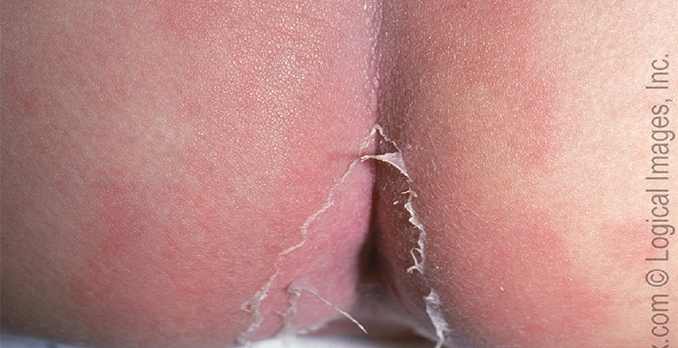
The diagnosis is Kawasaki disease, or mucocutaneous lymph node syndrome, a multisystem vasculitis that affects infants and children. The exact cause of Kawasaki disease is unknown, although several features suggest an infectious (likely viral) etiology. It occurs primarily in children aged younger than 6 years. In most patients, Kawasaki disease follows a benign course. However, coronary artery aneurysms develop in 20% to 25% of untreated patients. Treatment is with intravenous gamma globulin and aspirin.
Kawasaki disease is classically characterized by six criteria:
Fever lasting at least 5 days (usually longer)
Non-purulent conjunctivitis (Figure 1)
Red lesions of the mouth or pharynx (Figure 2)
Acute hand and foot edema followed by peeling
Polymorphous cutaneous eruption, typically on the trunk and extremities with a predilection for the lower abdomen, groin, perineum, and buttocks (Figure 3)
Lymphadenopathy
It is important to note that Kawasaki disease can present with red cheeks, as does fifth disease (erythema infectiosum). Premature closure on fifth disease leading to missing Kawasaki disease is a diagnostic pitfall.
Case reprinted with permission from the Logical Images digital medical image library. For more information, visit http://www.logicalimages.com
[taq_review]
